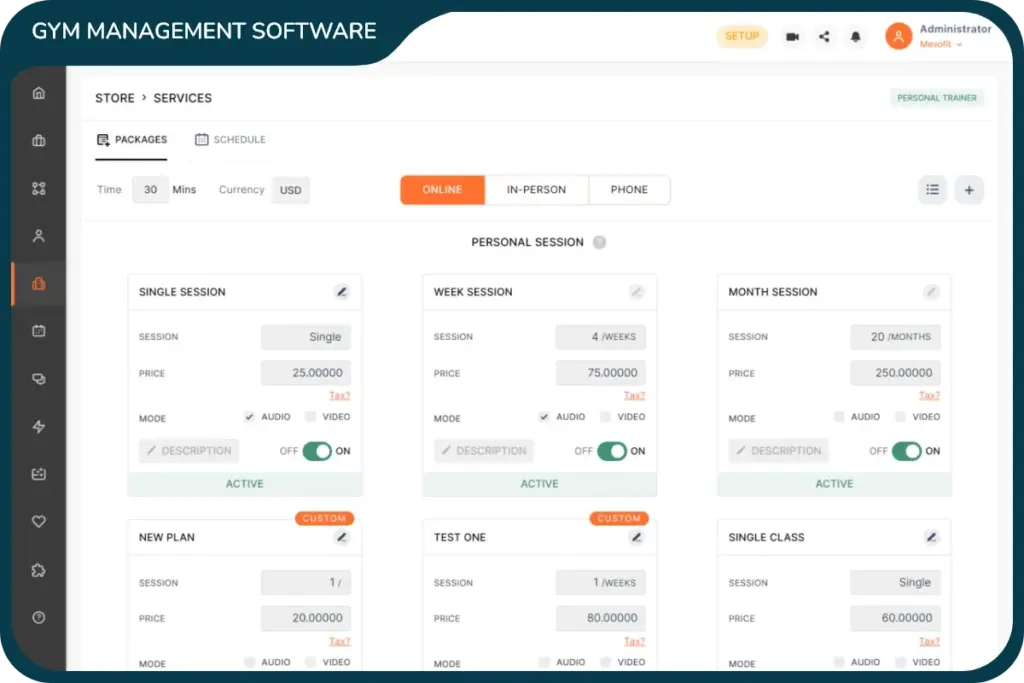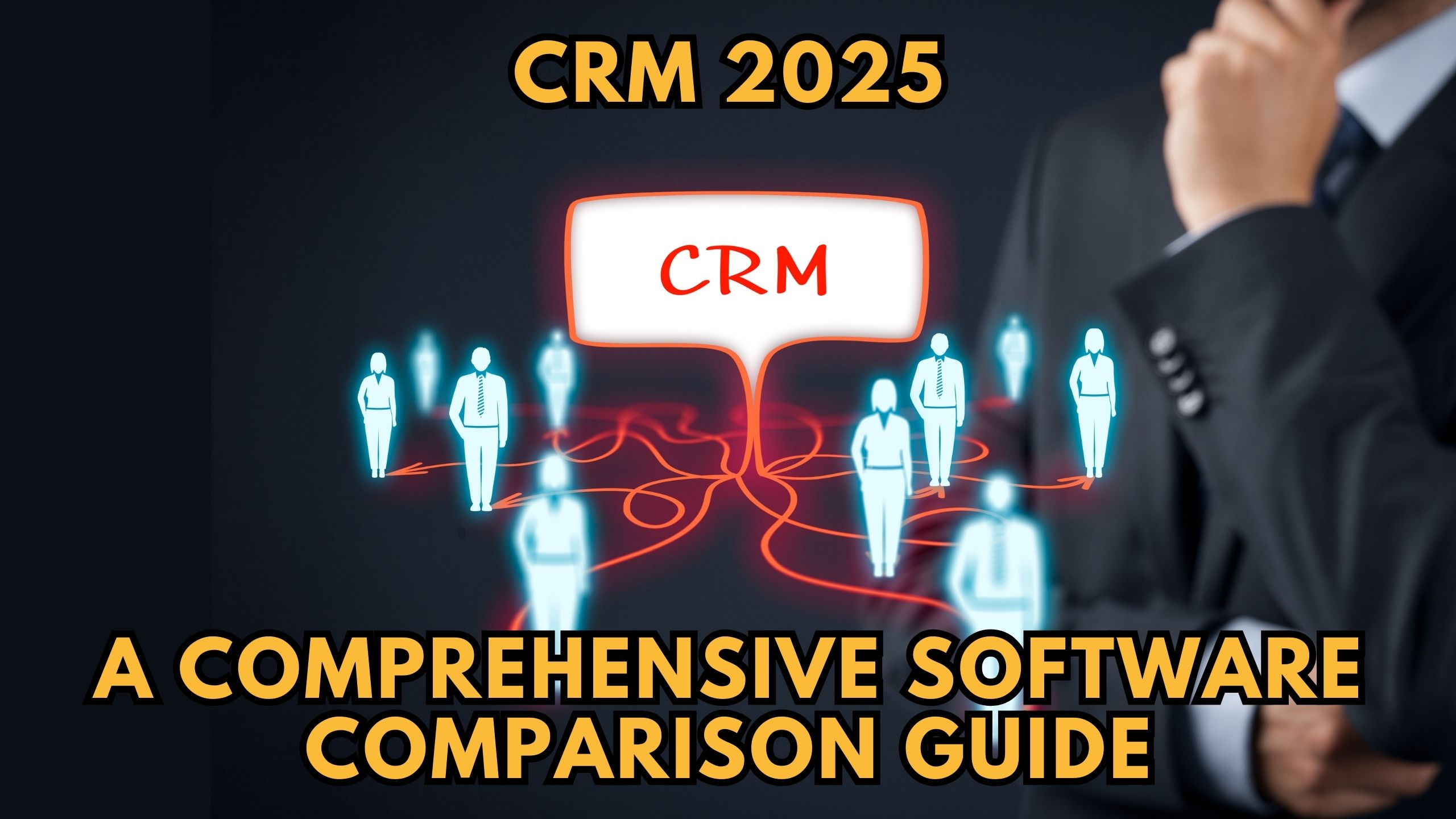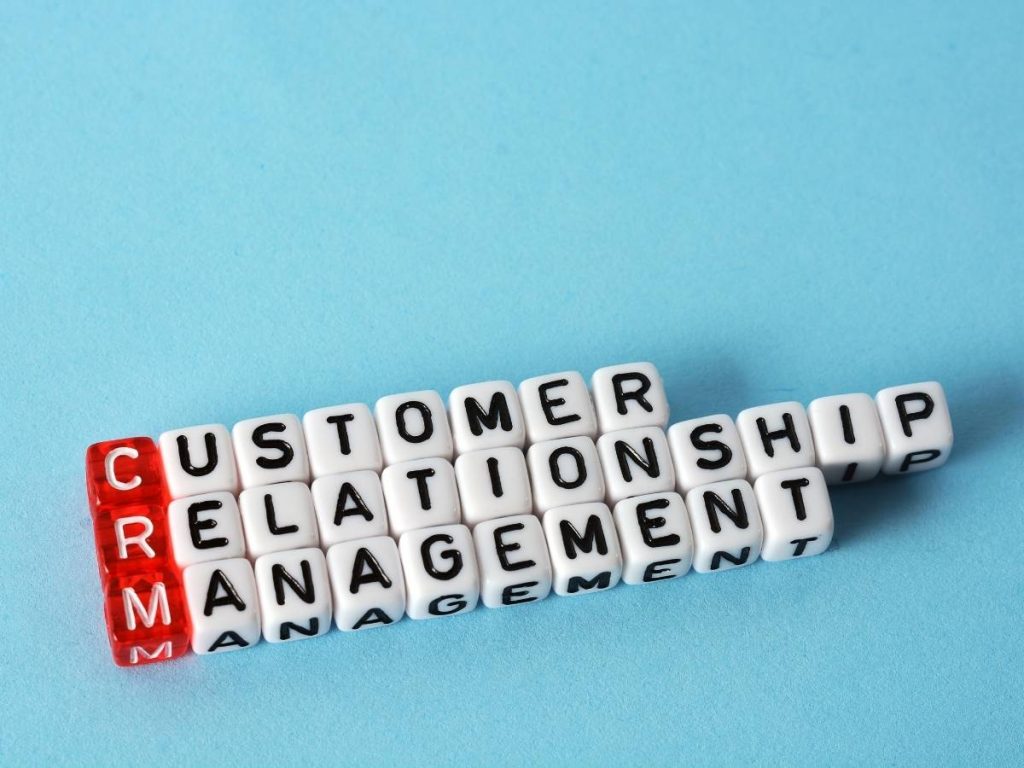
Introduction: Why Your Small Gym Needs a CRM (and Why It’s Not Just for Big Businesses)
Running a small gym is a labor of love, isn’t it? You pour your heart and soul into helping people achieve their fitness dreams, building a community, and keeping the energy levels high. But let’s be honest, juggling all the administrative tasks – scheduling classes, managing memberships, tracking payments, and communicating with your members – can feel like a never-ending workout in itself. That’s where a Customer Relationship Management (CRM) system comes in. You might think CRMs are only for massive corporations with endless budgets, but trust me, the best CRM for small gyms can be a game-changer.
A CRM isn’t just a fancy address book; it’s the central nervous system of your gym. It helps you centralize all your member data, automate repetitive tasks, streamline communication, and ultimately, grow your business. In this comprehensive guide, we’ll dive deep into the world of gym CRMs, exploring their benefits, key features, and helping you choose the perfect one to fit your unique needs. We’ll also look at real-world examples, discuss pricing, and provide tips for a smooth implementation. Get ready to transform your gym from a place of frantic admin to a well-oiled machine!
The Benefits of a CRM for Your Small Gym: More Than Just Data Storage
So, why bother with a CRM? The advantages are numerous, and they extend far beyond simply storing contact information. Here’s a breakdown of the core benefits:
- Improved Member Management: A CRM provides a 360-degree view of each member. You can track their membership type, payment history, class attendance, fitness goals, and any communication you’ve had with them. This allows you to personalize their experience and build stronger relationships.
- Streamlined Communication: Forget about manually sending emails or texts. A CRM lets you automate these tasks, sending welcome messages, reminders about upcoming classes, payment notifications, and promotional offers. This saves you time and ensures consistent communication.
- Enhanced Sales and Marketing: A CRM can help you track leads, nurture prospects, and convert them into paying members. You can segment your audience, create targeted marketing campaigns, and measure the effectiveness of your efforts.
- Increased Efficiency: Automating tasks like scheduling, billing, and reporting frees up your time to focus on what you do best: helping your members achieve their fitness goals.
- Better Reporting and Analytics: A CRM provides valuable insights into your gym’s performance. You can track key metrics like member retention, class attendance, revenue, and marketing campaign effectiveness. This data helps you make informed decisions and optimize your strategies.
- Improved Member Retention: By providing personalized experiences, staying in touch regularly, and proactively addressing member needs, a CRM helps you keep your members engaged and reduces churn.
In essence, a CRM empowers you to work smarter, not harder. It allows you to create a more efficient, personalized, and engaging experience for your members, leading to increased revenue and a thriving gym community.
Key Features to Look for in the Best CRM for Small Gyms
Not all CRMs are created equal. When choosing the right one for your small gym, consider these essential features:
1. Member Management
- Detailed Member Profiles: The ability to store all relevant member information, including contact details, membership type, payment history, fitness goals, and any notes about their preferences or progress.
- Membership Tracking: Easily track membership start and end dates, renewals, and any changes to membership plans.
- Attendance Tracking: Record class attendance to monitor member engagement and identify potential drop-off points.
- Communication History: Keep a record of all communication with each member, including emails, texts, and phone calls.
2. Scheduling and Booking
- Online Booking: Allow members to easily book classes and appointments online, 24/7.
- Class Scheduling: Create and manage class schedules, including instructor assignments, class capacity, and room assignments.
- Appointment Scheduling: Manage personal training sessions, consultations, and other appointments.
- Automated Reminders: Send automated reminders to members about upcoming classes and appointments.
3. Payment Processing and Billing
- Integrated Payment Processing: Accept online payments through various payment gateways.
- Automated Billing: Automate recurring billing for membership fees and other services.
- Payment Tracking: Track payment history and identify any outstanding balances.
- Invoice Generation: Generate professional invoices for services rendered.
4. Communication and Marketing
- Email Marketing: Send targeted email campaigns to promote your services, announce special offers, and keep members informed.
- SMS Marketing: Send text messages for appointment reminders, class updates, and promotional offers.
- Segmentation: Segment your audience based on demographics, interests, or membership type to create targeted campaigns.
- Automation: Automate email and SMS campaigns to save time and improve efficiency.
5. Reporting and Analytics
- Key Performance Indicators (KPIs): Track key metrics like member retention, class attendance, revenue, and marketing campaign effectiveness.
- Customizable Reports: Generate custom reports to analyze your gym’s performance and identify areas for improvement.
- Data Visualization: Visualize your data with charts and graphs to gain a better understanding of your business.
6. Integrations
The ability to integrate with other software you use, such as:
- Website: Integrate with your website to allow online booking and lead capture.
- Social Media: Connect with your social media accounts to promote your services and engage with your audience.
- Accounting Software: Integrate with your accounting software to streamline your financial processes.
Top CRM Systems for Small Gyms: A Comparative Analysis
Now that you know what to look for, let’s explore some of the best CRM for small gyms currently available. We’ll look at their key features, pricing, and what makes them stand out.
1. Mindbody
Overview: Mindbody is a well-established and widely used CRM in the fitness industry, offering a comprehensive suite of features for gym management. It’s known for its robust scheduling, booking, and payment processing capabilities.
Key Features:
- Online booking and scheduling
- Membership management
- Payment processing
- Marketing automation
- Reporting and analytics
- Mobile app for members
Pros:
- Highly reputable and widely adopted
- Comprehensive feature set
- Strong scheduling and booking capabilities
- Extensive integrations
Cons:
- Can be expensive, especially for small gyms
- Interface can be complex and overwhelming for new users
- Some users report occasional technical issues
Pricing: Mindbody offers various pricing plans based on the features and the size of your business. Be prepared for a potentially significant monthly investment, especially if you need the more advanced features. Check their website for the most up-to-date pricing.
Best For: Gyms that need a robust, all-in-one solution and are willing to invest in a comprehensive system. Mindbody is a great fit if you want a large feature set and a well-known platform.
2. WellnessLiving
Overview: WellnessLiving is another popular choice, particularly known for its focus on customer experience and its user-friendly interface. It offers a wide range of features, including online booking, marketing tools, and integrated payment processing.
Key Features:
- Online booking and scheduling
- Membership management
- Payment processing
- Marketing automation (email and SMS)
- Client app with branded features
- Automated marketing campaigns
Pros:
- User-friendly interface
- Strong focus on customer experience
- Comprehensive feature set
- Competitive pricing
- Good customer support
Cons:
- Some advanced features may require a higher-tier plan
- The sheer number of features might be overwhelming for some users.
Pricing: WellnessLiving offers various pricing tiers, making it accessible to a range of businesses. Pricing is typically based on the number of active clients you have. Check their website for the most up-to-date pricing.
Best For: Gyms that prioritize a user-friendly experience, want strong marketing tools, and value excellent customer support. WellnessLiving is a great option if you’re looking for an all-in-one solution.
3. Glofox
Overview: Glofox is a CRM specifically designed for the fitness industry, with a focus on helping gym owners grow their businesses. It offers a range of features, including online booking, membership management, and marketing automation.
Key Features:
- Online booking and scheduling
- Membership management
- Payment processing
- Marketing automation
- Mobile app for members
- Detailed reporting and analytics
Pros:
- User-friendly interface
- Designed specifically for the fitness industry
- Strong focus on member engagement
- Competitive pricing
- Good mobile app experience
Cons:
- May have fewer integrations than some competitors
- Some users report issues with customer support response times
Pricing: Glofox offers various pricing plans based on the features and the size of your business. They offer different plans based on the number of active members. Check their website for the most up-to-date pricing.
Best For: Gyms that want a dedicated fitness CRM, with a focus on member engagement and growth. Glofox is a solid choice if you prioritize ease of use and a mobile-first experience.
4. Zen Planner
Overview: Zen Planner is a comprehensive gym management software with robust features for scheduling, member management, and billing. It’s particularly well-suited for gyms that offer a variety of classes and programs.
Key Features:
- Scheduling and class management
- Membership management
- Billing and payment processing
- Automated billing and payment reminders
- Workout tracking and performance monitoring
- Reporting and analytics
Pros:
- Strong class scheduling and management capabilities
- Excellent workout tracking features
- Automated billing and payment reminders
- Good customer support
Cons:
- Interface can feel dated compared to some competitors
- May not have as many marketing features as other options
Pricing: Zen Planner’s pricing is based on the number of active members you have. Check their website for the most up-to-date pricing.
Best For: Gyms that emphasize class scheduling, workout tracking, and automated billing. Zen Planner is a good fit if you need a robust system for managing your classes and programs.
5. PushPress
Overview: PushPress is a gym management software that focuses on providing a modern and intuitive experience. It offers a range of features, including online booking, membership management, and automated marketing tools.
Key Features:
- Online booking and scheduling
- Membership management
- Payment processing
- Automated marketing
- Website integration
- Workout tracking
Pros:
- User-friendly interface
- Modern design
- Focus on automation
- Competitive pricing
- Good customer support
Cons:
- May have fewer advanced features than some competitors
- Some users report occasional glitches or bugs
Pricing: PushPress offers different pricing tiers, including a free plan with limited features and paid plans with more functionality. Check their website for the most up-to-date pricing.
Best For: Gyms looking for a modern, user-friendly, and affordable CRM. PushPress is a great option if you want a system that’s easy to use and helps you automate your marketing efforts.
How to Choose the Right CRM for Your Gym: A Step-by-Step Guide
Choosing the right CRM is a crucial decision, so don’t rush it! Here’s a step-by-step approach to help you find the perfect fit:
- Assess Your Needs: Before you start researching, take the time to identify your gym’s specific needs and goals. What are your biggest pain points? What tasks do you want to automate? What features are most important to you? Make a list of your must-have features and nice-to-have features.
- Define Your Budget: Determine how much you’re willing to spend on a CRM system. Consider not only the monthly subscription fees but also any setup costs, training costs, and potential costs for add-ons or integrations.
- Research and Compare Options: Based on your needs and budget, research different CRM systems that cater to the fitness industry. Read reviews, compare features, and create a shortlist of potential candidates. Use the information above on the top CRM providers as a starting point.
- Request Demos and Free Trials: Once you have a shortlist, request demos or free trials from the vendors. This will allow you to get a hands-on feel for the software and see how it works in practice.
- Consider Integrations: Make sure the CRM integrates with any other software you use, such as your website, accounting software, or email marketing platform.
- Evaluate Customer Support: Check the vendor’s customer support options. Do they offer phone support, email support, or live chat? Are they responsive and helpful? Good customer support is crucial, especially when you’re first setting up the system.
- Read Reviews and Testimonials: See what other gym owners are saying about the CRM systems you’re considering. Read reviews on websites like G2, Capterra, and Trustpilot.
- Factor in Scalability: Choose a CRM system that can grow with your gym. As your business expands, you’ll want a system that can handle increased member volume and more complex operations.
- Make a Decision and Implement: Once you’ve thoroughly evaluated your options, make a decision and implement the CRM system. Be prepared to invest time in training your staff and migrating your data.
- Provide Training: Make sure to provide sufficient training to your staff on how to use the CRM. A well-trained team will be more efficient and able to leverage the power of the system.
Tips for a Smooth CRM Implementation
Implementing a CRM system can be a significant undertaking, but with proper planning and execution, you can ensure a smooth transition:
- Data Migration: Plan how you’ll migrate your existing member data into the new CRM. This may involve manually entering data, importing data from spreadsheets, or using data migration tools.
- Staff Training: Invest time in training your staff on how to use the new CRM system. Provide clear instructions, hands-on training, and ongoing support.
- Customize the System: Customize the CRM to fit your gym’s specific needs. Configure the settings, create custom fields, and personalize the system to your branding.
- Test the System: Before going live, test the system thoroughly. Ensure that all features are working correctly and that data is being stored properly.
- Communicate with Your Members: Let your members know about the new CRM system and how it will benefit them. Explain how it will improve their experience and make it easier for them to interact with your gym.
- Monitor and Optimize: After implementation, monitor the system’s performance and make adjustments as needed. Track key metrics and identify areas for improvement.
Conclusion: Elevate Your Gym with the Right CRM
Choosing the best CRM for small gyms is an investment in your gym’s future. By streamlining your operations, improving communication, and gaining valuable insights into your business, a CRM can help you attract new members, retain existing ones, and ultimately, achieve your business goals. Take the time to research your options, assess your needs, and choose the system that best fits your unique requirements. With the right CRM in place, you’ll be well on your way to building a thriving and successful gym community.
Don’t let administrative tasks bog you down. Embrace the power of a CRM and watch your gym flourish!


